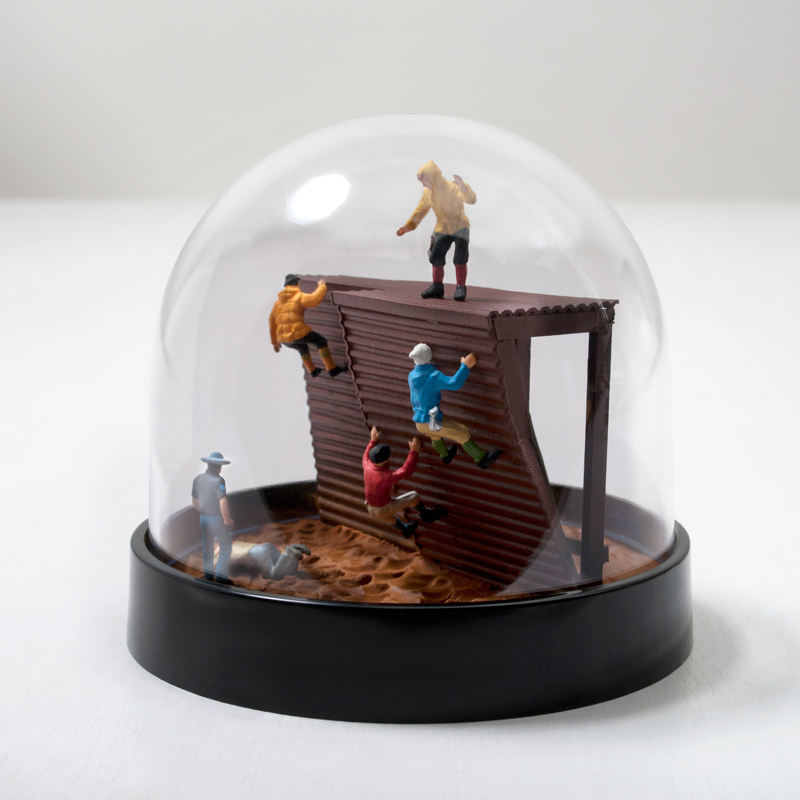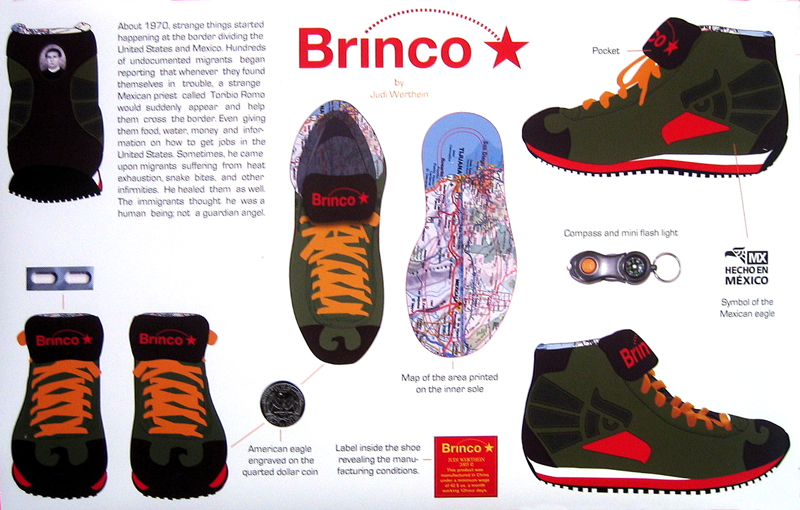Immigrants can walk hundreds of miles in hot, arid, rocky and harsh conditions before arriving to the wall. During the journey, their shoes can wear out, causing blisters, twisted ankles, and other foot injuries. A common remedy to give added longevity to worn out shoes is to stuff them with leaves from the Yucca plant to protect the foot. Ironically, Native Americans in the border region historically fashioned shoes made of yucca fiber.
In the small town of Sasabe, Sonora, another shoe design has emerged to aid in border crossing. For about $4 a shoe, customers can have the soles of their shoes covered with shag carpet so that footprints would not be left in the ground making it more difficult to detect by border patrol agents. Smugglers also often employ this tactic of wrapping their shoes in carpet to avoid detection—a useful tool in the heavily trampled Zen Gardens of dust created by border patrol agents dragging tires to smooth the landscape to increase footprint detection.
Argentine artist Judi Werthein arrived at yet another design for a shoe for the borderlands. The year before the Secure Fence Act of 2006 was passed, Werthein had designed shoes exclusively for border crossing migrants intending to take a journey to the desert and jump the wall. These cross-trainers are called Brinco, a term used by immigrants to describe their “jump” across the fence to the other side. A compass and flashlight, as most immigrants attempt to cross at night, are attached to the shoelaces. They also have a small pocket for hiding money from coyotes but come with Tylenol pain relievers, to alleviate the pain from injuries sustained on the journey. On the removable insole is a map of the border showing the most popular routes from Tijuana to San Diego. The sneakers are high-tops to protect the ankles from twisting on rocks or from descending the tall border wall. Additional protection is from Saint Toribio Romo Gonzalez, the patron saint of Mexican immigrants, who’s image adorns the back ankle (there is a belief among some Mexicans that the ghost of Santo Toribio, who was killed in 1928 and canonized by Pope John Paul II, in 2000, has appeared to some undocumented immigrants crossing the border to assist them in distress). On the heel is an abstraction of the Mexican eagle (golden eagle) and the pattern on the toe is an abstraction of the eagle found on the quarters (bald eagle) describing where one is coming from and where one is heading. Embroidered on the shoes is the statement “This product was manufactured in China under a minimum wage of $42 a month working 12-hour days”, to underscore the message of global trade and inequity the shoes, as an art piece, were designed to convey. The 1,000 shoes that were produced were commissioned by inSite San Diego where Werthein exhibited the shoes, but they were also placed for sale in a San Diego hip boutique for $215. On the other side of the wall, Werthein also distributed shoes at a migrant shelter in Tijuana for free.
Currently, the wall isn’t very difficult to climb. Two young girls tested this theory, surmounting the wall in just a matter of seconds. Infact, the wall has been breached xxx times costing over xxx in repairs. Imagine if the wall was designed not to make it more difficult to climb, but more challenging. In such a scenario, the wall would take on the profiles of rock climbing wall with various routes and grading. Of course, there would be consequences to coming down on the wrong side.

